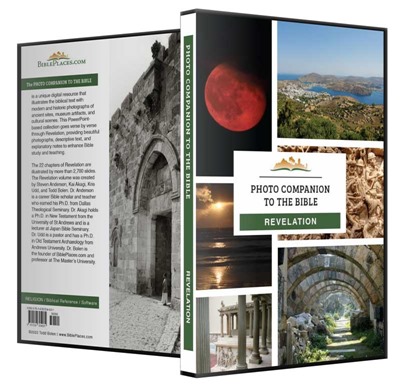“A 3,000-year-old scarab – an ancient amulet and impression seal – was discovered during a school field trip to Azor, about seven kilometers southeast of Tel Aviv.”
Archaeologists discovered a section of Roman road from the 2nd century AD west of Tiberias in excavations along the Sanhedrin Trail.
“The Khirbet Midras pyramid is thought to be the largest and best preserved of a handful of pyramid-topped mortuary complexes dating back to the Second Temple and Roman eras in Israel.”
“Graffito from Beit She’arim cemetery confounded scholars for decades – until they figured out it was written in Aramaic using a Persian alphabet.”
“The Tower of David Jerusalem Museum’s citadel and exhibition rooms on its upper levels have become accessible to all for the first time after a five-year process.”
“The headlines this month from the world of biblical archaeology included the discovery of a previously unknown Egyptian queen, a possible Judahite royal inscription, and an everyday item with big implications.”
“Tel Aviv University’s Archaeometallurgical Laboratory offers a limited number of student scholarships for participating in the upcoming excavations at Timna Valley (January 22nd – February 4th 2023). Those who wish to apply, please write directly to Mr. Yoav Vaknin ([email protected]) by January 1st 2023, and include your CV and a short reference letter.”
Hybrid lecture on Dec 7: “Recently Found Inscriptions from Israel / the Southern Levant,” by Jonathan Stökl. Registration required.
The “Spirit of Scholarship” conference will be held in Jerusalem (in-person) only on Dec 12-14. “The conference investigates the groundbreaking scholarship by Catholic priests in the burgeoning disciplines of ancient Near Eastern studies from the late-19th to the mid-20th centuries and also considers where these efforts have led to today.” The schedule and abstracts are posted at the website.
Leon Mauldin shares several springtime photos he took at Beth-shemesh.
Carl Rasmussen shares some photos and impressions of his recent visit to the Mount of Beatitudes.
Oliver Hersey and Chris McKinny discuss the cultural backgrounds to the book of Ruth in the latest episode of the BiblicalWorld podcast.
–>We have finished creating photo collections for every book in the New Testament. You can purchase the new Revelation volume with its 3,000 photos for only $79. But for a few more days, you can take advantage of the launch discount price of $49. Purchasing now is also a great way to support our work and help us to keep going.
HT: Agade, Arne Halbakken, Ted Weis, Joseph Lauer, Explorator, Paleojudaica
